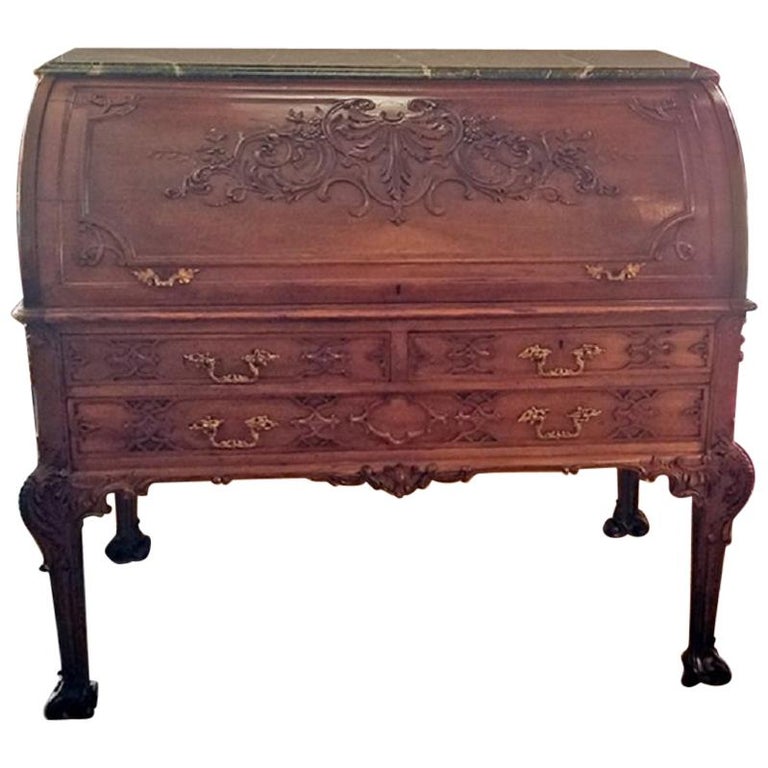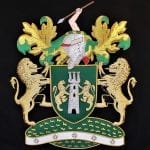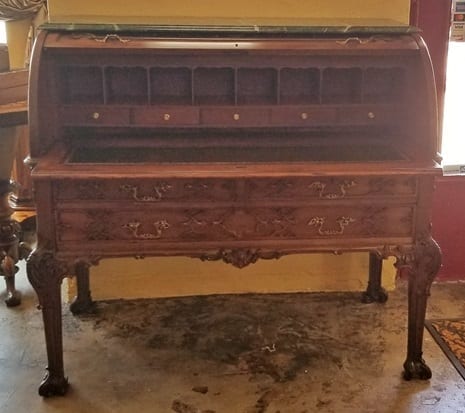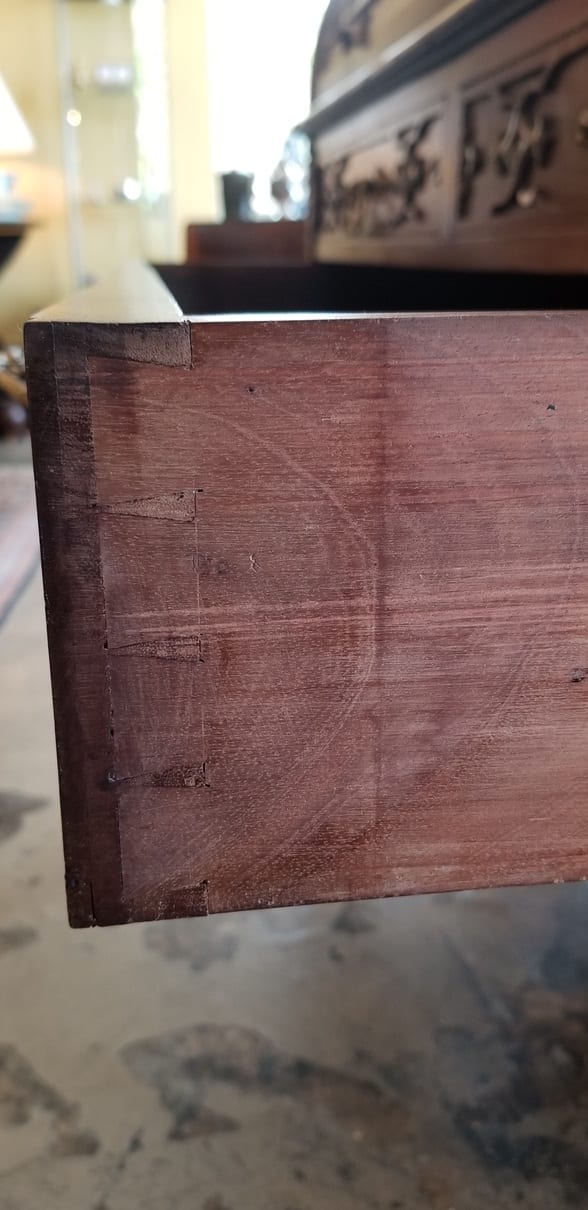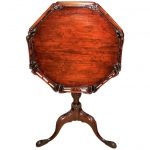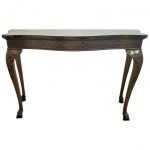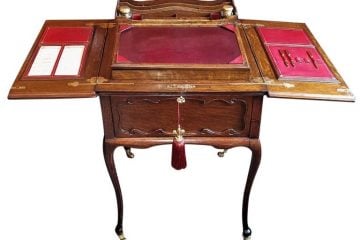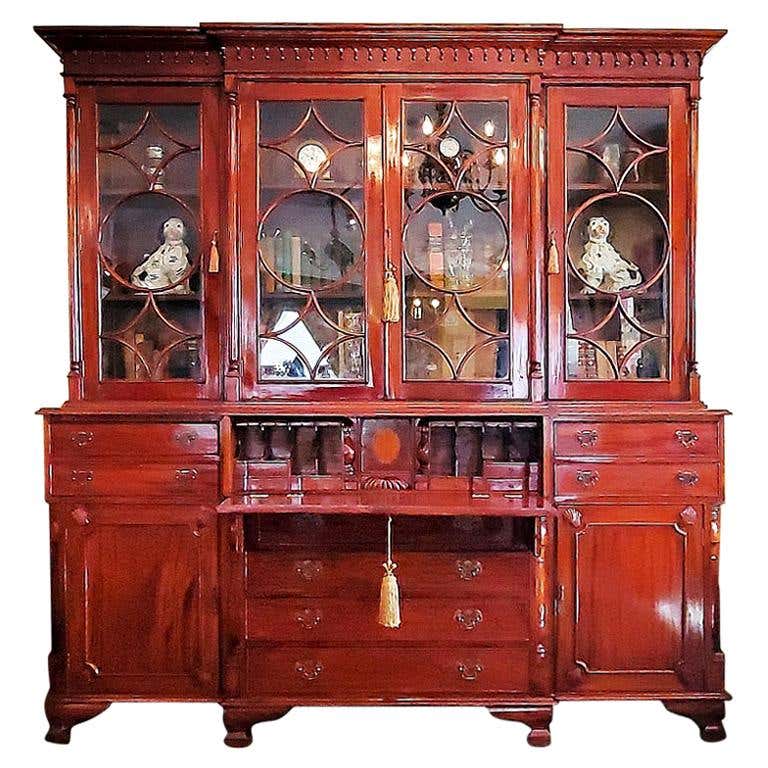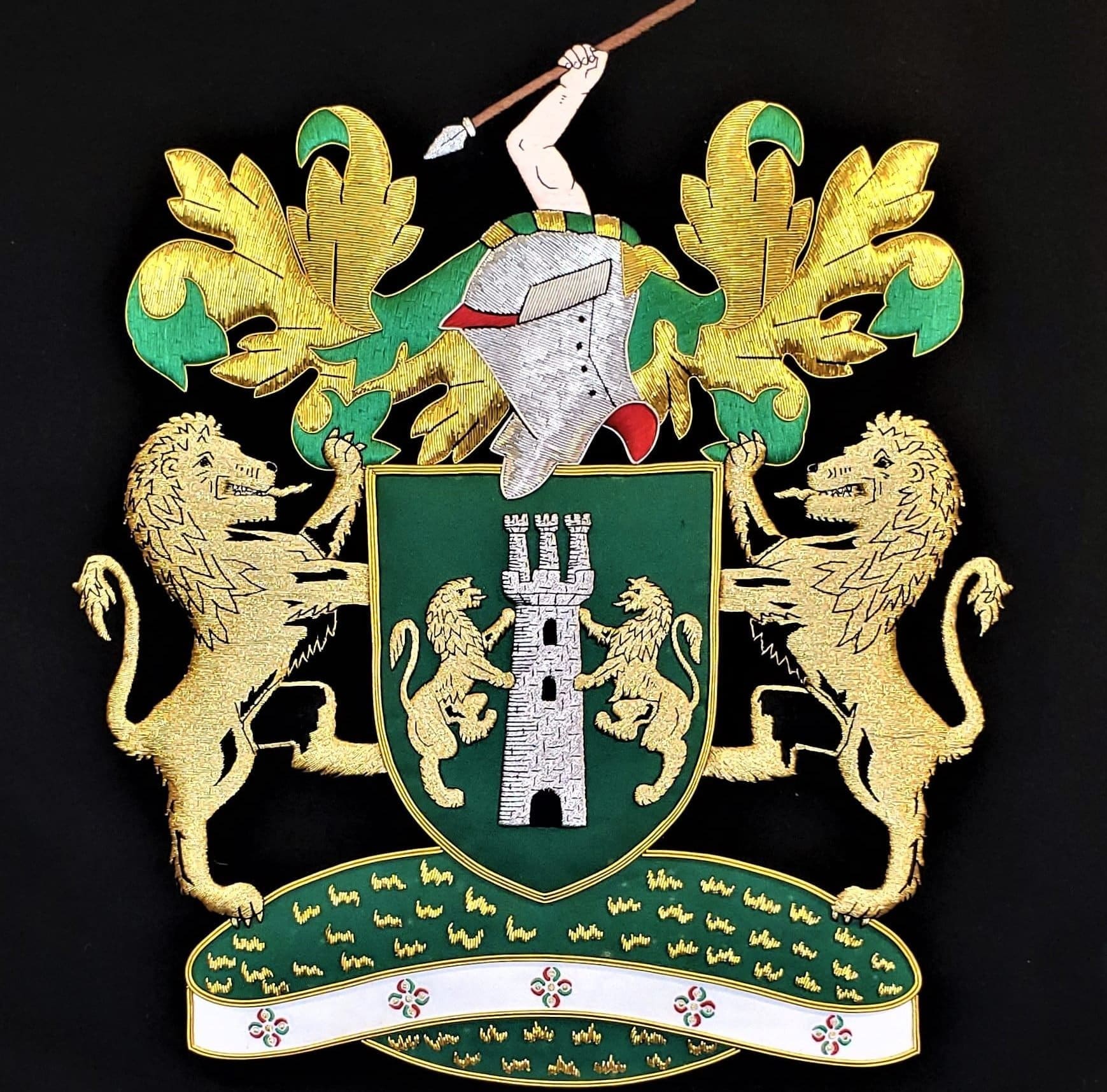19C English Chippendale/Rococo Style Cylinder Desk by Hampton & Sons
PRESENTING an ABSOLUTELY GORGEOUS mid 19th Century English Chippendale/Rococo Style Cylinder Desk from the renowned maker of Hampton & Sons, of Pall Mall, London.
This stunning piece is elegance at it’s best, with the most gorgeous natural age and patina to its surface and stunning details to the moldings and legs.
We estimate this to be from circa 1860 – 70.
It is made of the most beautiful mahogany with beautiful natural patina.
The top is in ‘cylindrical’ form, which, as the front is raised, the writing desk moves outwards. Once opened, it reveals a writing slope with original tooled green leather, 5 drawers and 8 open ‘cubbies’.
The outside of the desk front has gorgeous moldings in floral patterns, very ‘Rococo’ in style.
Below the writing slope are 3 drawers. The first two are smaller and the bottom one is one single drawer.
Each drawer has ‘rococo’ style moldings.
The smaller drawer on the right has had a lock and escutcheon installed some time after manufacture which slightly covers the makers mark, however the makers mark is unmistakably for the renowned London furniture maker and high-end London retailer, ‘Hampton & Sons’.
The legs are very ‘Chippendale’ in style and form, but with ‘Rococo Style’ floral moldings/designs on the knees and scroll feet, rather than the normal paw Chippendale feet.
This is a REALLY QUALITY PIECE
Hampton and Sons Ltd of Pall Mall East, Trafalgar Square London
Established in 1830 in Cranbourn Street, Leicester Square by William Hampton, later being joined by his sons, George and William, the company moved to 8 Pall Mall East, adjacent to Trafalgar Square, in very large premises, trading as builders and surveyors, estate agents, ‘antique and modern furniture dealers’, general furnishers, upholsterers, plumbers and electricians. Their commissions included, inter alia, the furnishing of the Royal Yacht Britannia, the liners Queen Mary and Queen Elizabeth, the Theatre Royal in Drury lane, and the palaces of the Nizam of Hyderabad and the Maharajah of Kashmir. An incendiary bomb destroyed the building in 1940, after which they moved to Kensington High Street, where they traded until 1960.
ROCOCO STYLE – In Great Britain, rococo was called the “French taste” and had less influence on design and the decorative arts than in continental Europe, although its influence was felt in such areas as silverwork, porcelain, and silks. William Hogarth helped develop a theoretical foundation for Rococo beauty. Though not mentioning rococo by name, he argued in his Analysis of Beauty (1753) that the undulating lines and S-curves prominent in Rococo were the basis for grace and beauty in art or nature (unlike the straight line or the circle in Classicism).
Rococo was slow in arriving in England. Before entering the Rococo, British furniture for a time followed the neoclassical Palladian model under designer William Kent, who designed for Lord Burlington and other important patrons of the arts. Kent travelled to Italy with Lord Burlington between 1712 and 1720, and brought back many models and ideas from Palladio. He designed the furniture for Hampton Court Palace (1732), Lord Burlington’s Chiswick House (1729), London, Thomas Coke’s Holkham Hall, Norfolk, Robert Walpole’s Houghton Hall, for Devonshire House in London, and at Rousham House.
Mahogany made its appearance in England in about 1720, and immediately became popular for furniture, along with walnut wood. The Rococo began to make an appearance in England between 1740 and 1750. The furniture of Thomas Chippendale was the closest to the Rococo style, In 1754 he published “Gentleman’s and Cabinet-makers’ directory”, a catalogue of designs for rococo, chinoiserie and even Gothic furniture, which achieved wide popularity, going through three editions. Unlike French designers, Chippendale did not employ marquetry or inlays in his furniture. The predominant designer of inlaid furniture were Vile and Cob, the cabinet-makers for King George III. Another important figure in British furniture was Thomas Johnson, who in 1761, very late in the period, published a catalogue of Rococo furniture designs. These include furnishings based on rather fantastic Chinese and Indian motifs, including a canopy bed crowned by a Chinese pagoda (now in the Victoria and Albert Museum).
Link: https://en.wikipedia.org/wiki/Rococo
19C English Chippendale/Rococo Style Cylinder Desk by Hampton & Sons
Provenance: Bought in Los Angeles by a Private Collector.
Condition: Very Good original condition. One minor repair to front right leg, but not very noticeable and does not adversely affect the piece. We are of the opinion that the green marble top is a later replacement and it would originally have had a wooden gallery on top, but, the marble top is very complimentary to the piece and makes the piece more functional and usable. Minor crack to base molding on the front but not very noticeable. Drawer handles/hardware re-gilded.
Dimensions: 45 inches tall, 49.5 inches wide, 27.5 inches deep (when closed)
45 inches tall, 49.5 inches wide, 34 inches deep (when fully open)
